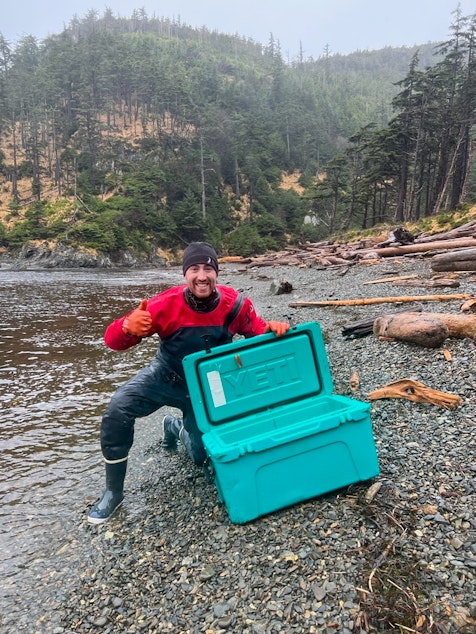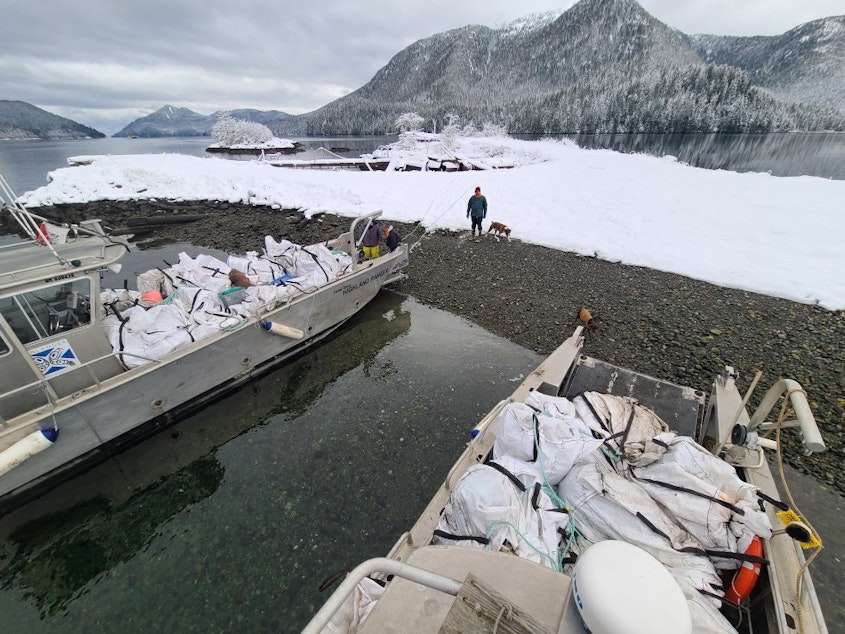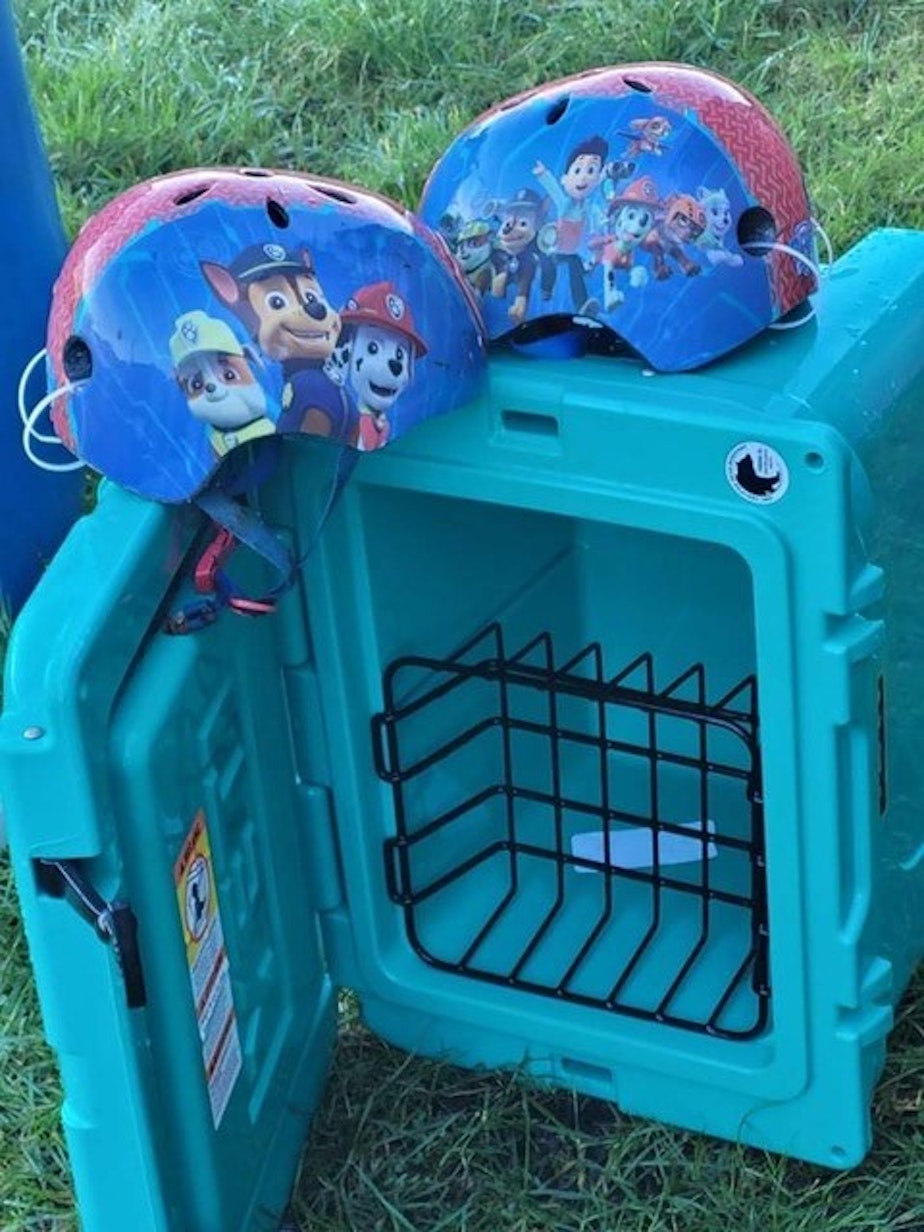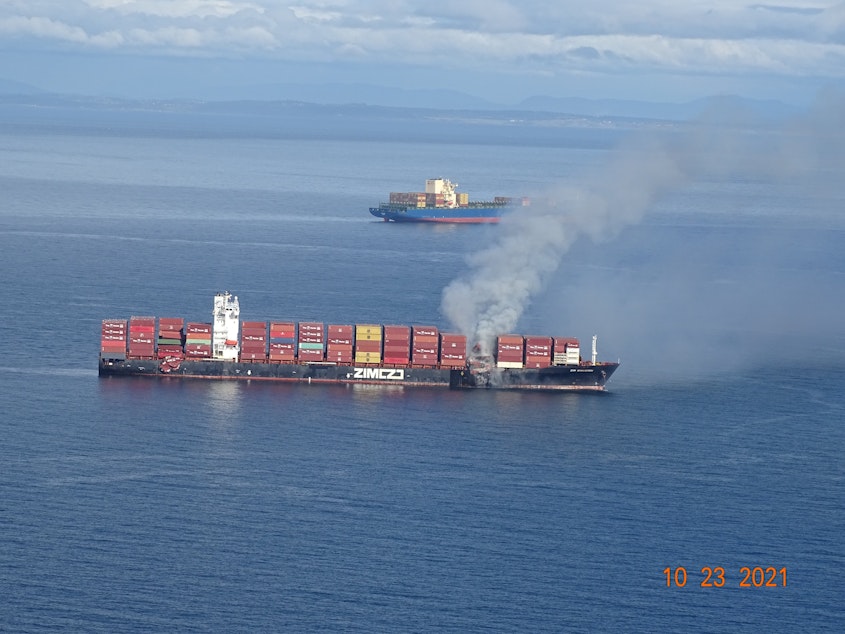Cargo-spilling ship leaves Northwest, returns to Asia. Its debris remains
Nearly four months after spilling 109 shipping containers off the Washington and British Columbia coasts, the Zim Kingston left North American waters on Wednesday.
There’s still no sign of 105 containers that the cargo ship lost during a storm in October, about 40 miles west of Washington’s Olympic Peninsula and 30 miles southwest of British Columbia’s Vancouver Island.
Large volumes of debris from the Oct. 21 spill drifted north onto wilderness beaches at the northern tip of Vancouver Island within a week. At least one bit of plastic debris floated as far as Haida Gwaii, the island chain just south of Canada’s border with Alaska, a few days later.
A Yeti brand plastic cooler washed up some 450 miles northwest of the spill in near-perfect condition on Oct. 30, according to the Council of the Haida Nation, the Indigenous government of Haida Gwaii.
The tides have delivered more coolers since then, banged up but often still usable.
The coolers, which sell for about $450 at REI, have become a hot commodity in the remote archipelago.
Sponsored
"A lot of locals are quite excited about the prospect of beachcombing for a Yeti cooler," said Julien Braun, who chairs a task force on marine debris in Haida Gwaii and works in marine planning for the Council of the Haida Nation.
Haida Nation president Gaagwiis Jason Alsop could not be reached Friday.

The 180-mile-long island chain has a population of around 5,000. Many of its rainforest beaches see little human activity.
Sponsored
Haida Gwaii beachcombers discovered less-desirable debris in November and December on beaches closer to the island chain's main towns: inflatable paddle boards, plastic soup lids, rubber boots, toy unicorns, urinal screens, and bags of prawn chips — usually torn open by crows or ravens by the time human eyes spotted them.
Sponsored
Marine debris is nothing new to the offshore archipelago. Ocean currents regularly deposit everything from soda bottles to Japanese glass fishing floats onto Haida Gwaii's west coast.
"Just the way that the water moves, there’s some areas that get hit really heavily with debris from all over the world," Braun said.

The Council of the Haida Nation and the nonprofit Misty Isles Economic Development Society received a $1.8 million grant from the Province of British Columbia to clean up marine debris — and stimulate an economy depressed by a lack of tourism in a pandemic — shortly before the Zim Kingston spill.
Sponsored

Canadian Coast Guard officials say ocean debris is usually dominated by plastic bottles, fishing gear, and microplastics, making the Zim Kingston's distinctive, less-weathered items stand out.
Though winter conditions have limited access to the archipelago's rugged shorelines and no aerial surveys have been conducted, much less debris seems to have hit Haida Gwaii than Vancouver Island, closer to where the Zim Kingston lost part of its load.
As of early December, cleanup crews had removed 53 tons of Zim Kingston debris — including refrigerators, foam packaging, Christmas decorations, clothing, toys, gym mats, boots, and shoes — from beaches on northern Vancouver Island, according to the Canadian Coast Guard.
Environmentalists and First Nations officials on Vancouver Island say much more remains to be cleaned up, and new debris keeps popping up, from coolers to "Paw Patrol" bicycle helmets.
Sponsored

Sponsored
The Zim Kingston was on its way from Busan, South Korea, to the Port of Vancouver when it spilled containers in rough seas west of Cape Flattery.
The ship’s captain tried to ride out a big storm on the open ocean instead of sheltering in the relatively protected waters of the Strait of Juan de Fuca, as other big ships delayed by port congestion were doing at the time.
After the cargo spill, the Zim Kingston sailed to an anchorage in the Strait of Juan de Fuca, between Victoria and Port Angeles. There, mining chemicals on board spontaneously combusted, lighting hazardous fires that burned for days.
On Dec. 3, the ship continued with a binational flotilla of safety boats alongside to the Port of Nanaimo on Vancouver Island. While there, another fire broke out as crews were cutting through steel to untangle and offload an estimated 58 collapsed and burned containers.
“This was a minor shipboard fire that resulted from a spark ignition of insulation of an adjacent container, while the salvage team was cutting nearby,” said Nanaimo harbor master Capt. Satinder Singh.
Sponsored
In January, the troubled ship continued to its original destination, the Port of Vancouver, with about 1,800 shipping containers still on board. It left the port's Deltaport terminal, a mile north of the Washington border, on Feb. 7.
Canada’s Transportation Safety Board is investigating the incident but might not have findings for a year or more.
The Canadian Coast Guard says it’s continuing to work with Danaos Shipping, the Greek company that owns the Zim Kingston, to find and retrieve missing containers. Their first task: pick promising locations for sonar scans to look for sunken treasure or, more likely, waterlogged trash at the bottom of the Pacific Ocean. The Coast Guard says any sonar scanning will have to wait for a window of good weather.
Danaos Shipping spokespeople did not respond to KUOW's request for comment.
The Zim Kingston is now headed back across the Pacific, this time to Hong Kong.
It should be about a two-week voyage, if all goes smoothly this direction.




